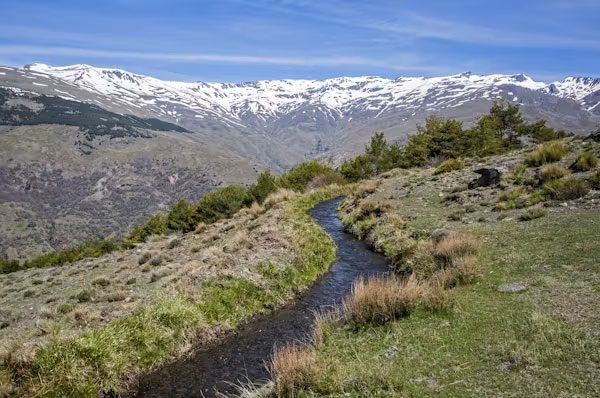Through archaeological discoveries around the world, scientists have found that ancient farming methods helped civilizations survive difficult periods due to unpredictable climate impacts.
The Zuni farmers in the southwestern United States overcame a prolonged drought from AD 1200 to 1400 by implementing decentralized, small-scale irrigation systems. Ghanaian farmers coped with severe drought from 1450 to 1650 by cultivating indigenous African grains, such as drought-resistant pearl millet.

Ancient irrigation methods of the Moors revived in Spain. (Photo: Getty Images).
These ancient methods are now gaining significant attention as countries face unprecedented heatwaves and floods. According to The Conversation, some farmers and international development organizations are delving deeper into restoring these ancient practices.
Drought-stricken farmers in Spain have revived the Medieval Moorish irrigation technology. Farm owners in Texas (USA) have turned to ancient cover cropping methods to combat unpredictable weather patterns. Cover crops primarily serve to reduce erosion, improve soil health, prevent weeds, and help control pests…
In the tropical lowlands of Mexico and Central America, indigenous Maya farmers have practiced slash-and-burn agriculture for thousands of years. They employ the milpa system, which interplants various indigenous vegetables. Additionally, they adapt to drought by carefully managing the forest ecosystem through controlled burning and cautiously preserving open forests.
Several years ago, the milpa methods of the Maya began to attract public attention as international organizations collaborated with renowned chefs to promote this concept. However, they condemned the practice of burning forests in new areas and instead advocated for a ‘no-burn’ version for cultivating certified organic corn for high-end restaurants.
In Central Mexico, the chinampa system comprises ancient artificial islands and canals. This method has allowed farmers to cultivate crops in wetland areas for centuries. With chinampa, farmers create narrow islands averaging 6 to 10 meters wide and 100 to 200 meters long. The water body surrounding the chinampa provides moisture with decomposing organic waste to irrigate and fertilize the soil on the islands, supporting intensive farming and high yields.
According to the BBC, these small islands formed from layers of vegetation and mud have the ability to absorb water from surrounding canals and maintain moisture for extended periods. Furthermore, the layers of chinampa are designed to facilitate plants’ rooting and direct access to groundwater, reducing the need for external irrigation.
Today, the future of chinampa agriculture depends on several fields managed by local farmers in the outskirts of Mexico City. These areas are currently at risk due to housing demands driving informal settlements encroaching into chinampa regions.



















































